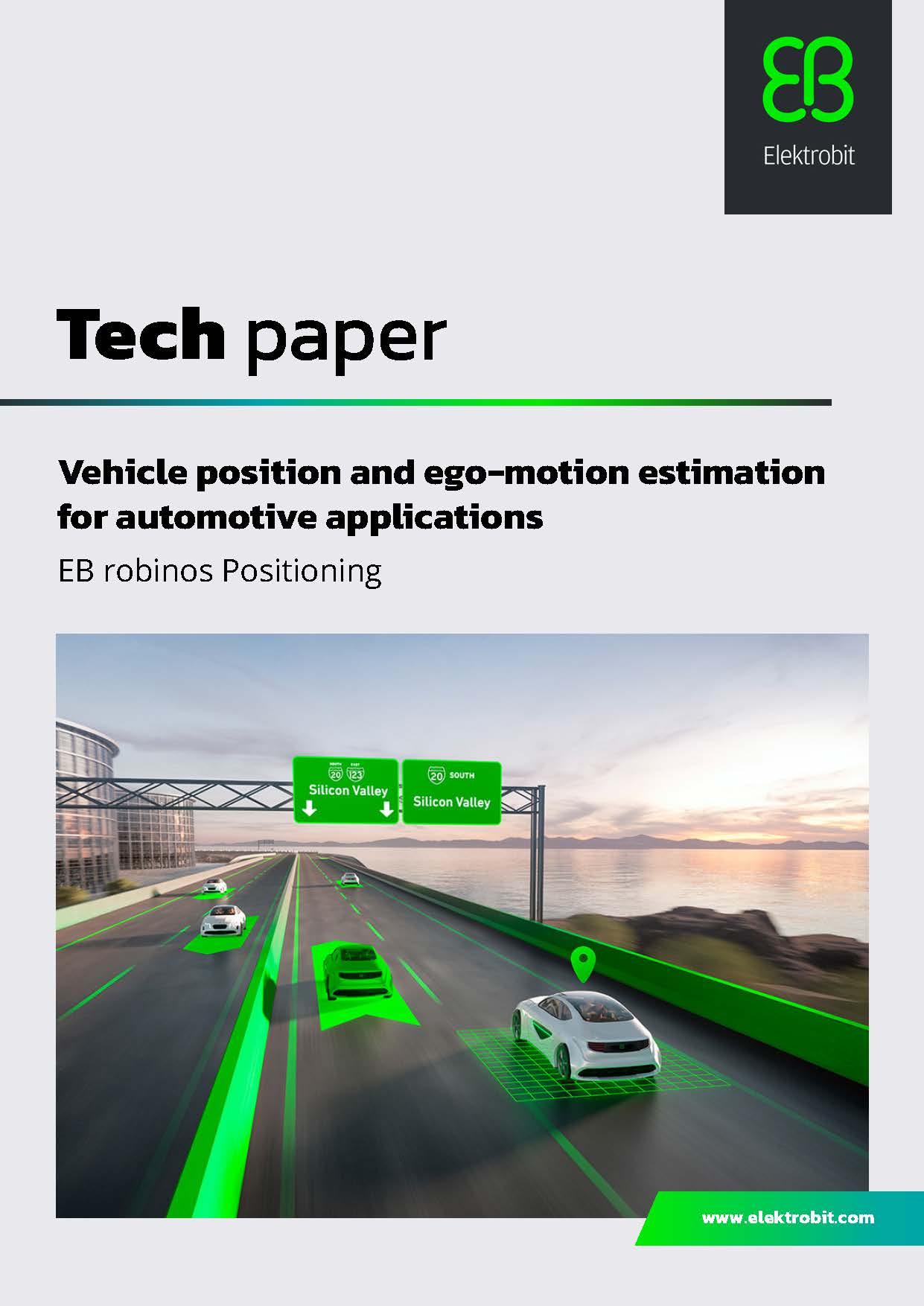Vehicle positioning is a well-known feature in terms of the classical navigation application. However, in modern automotive systems, this feature needs to cover a lot more demands for various use cases. It provides position as well as further vehicle motion information as a basis for several driver assistance up to autonomous driving applications. With that said, the positioning system needs to be highly accurate and reliable. This is ensured by a sensor calibration feature for monitoring the accuracy of its output.

Table of contents
- Introduction
- EB robinos Positioning
- Architecture
- Position Estimation
- Sensor Calibration
- Quality Evaluation
- Availability and Platform Independence
- Summary
- References
In the automotive market, there are multiple use cases which require knowledge of the current position, orientation and movement of the car. Examples are eCall, the navigation system, the electronic horizon (for more about electronic horizon, see (Elektrobit, TomTom), but also augmented reality applications that require a precise estimation and extrapolation of the orientation to provide impressive visual experiences. Algorithms for building an environment model as required in in highly automated driving (HAD) applications use movement information as input.
The EB robinos Positioning library provides extended positioning data based on a variety of possible sensor input. The EB robinos Positioning output is suitable for many purposes like electronic horizon, correct placement of augmented reality items in a head-up display (HUD), for navigation software, and even highly automated driving (HAD) functions. Since EB robinos Positioning is designed modularly, EB can provide solutions which implement only the needed functionality.
Comprehensive electronic horizon solution for accurate and up-to-date information about the road ahead: EB robinos Predictor
Robust and production-ready ADASIS Provider for your R&D activities: EB robinos Predictor Eval Kit
Click on the button to load the content from Pardot.


